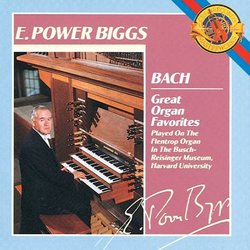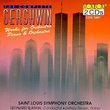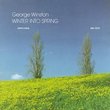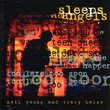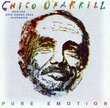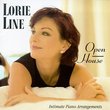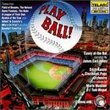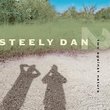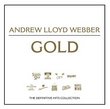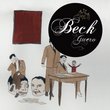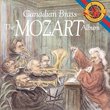| All Artists: E. Power Biggs Title: Bach: Great Organ Favorites with E. Power Biggs Members Wishing: 1 Total Copies: 0 Label: CBS Records Masterworks Genre: Classical Styles: Forms & Genres, Variations, Historical Periods, Baroque (c.1600-1750), Instruments, Keyboard, Sacred & Religious, Symphonies Number of Discs: 1 SwapaCD Credits: 1 UPC: 074644264425 |
Search - E. Power Biggs :: Bach: Great Organ Favorites with E. Power Biggs
CD DetailsSimilarly Requested CDs
|
CD ReviewsOne of my all time favorite CDs. Roy A. Fenimore | Winfield, AL USA | 02/10/2008 (5 out of 5 stars) "OK, I'm not going to try to fool anybody into thinking I'm a music expert; I'm just going to say I love this CD! E. Power Biggs is the greatest organist ever, and here he plays some of Bach's best (and most accessible) compositions. I listen to this CD all the time and never get tired of it." Biggs' Bach... Sébastien Melmoth | Hôtel d'Alsace, PARIS | 06/22/2009 (5 out of 5 stars) ". Dating back to late-Roman times and the Dark Ages, the organ is one of the West's oldest instruments. The oldest playable organ in the world resides in Sion (Switzerland) and dates to the late-14th Century. Organs and cathedrals (churches) were a perfect match in terms of size and acoustics, and in Bach's time there were many in existence and many being newly built (or refurbished). Bach himself became quite an expert on aspects of organ engineering, and his opinion was solicited throughout central Germany. The 1960s and `70s saw a great resurgence of interest in Bach's music, and E. Power Biggs was a major player of the movement. Biggs recorded for the same label as Glenn Gould--(Columbia)--and also shared the same producer (Andrew Kazdin). At that time Columbia issued numerous LPs of Biggs performing not only Bach but various other composers as well. With the advent of CD techne in the mid-1980s, Columbia reissued a few of those recordings; unfortunately, the bulk of Biggs' work has never made it to CD. So, we are lucky to have here some of Biggs' best Bach realizations which (to paraphrase), Age cannot wither, nor custom stale Their infinite variety. . Although Biggs travelled throughout Europe performing on original instruments of Schnitger, Silbermann and others, when at home he always preferred Harvard's Flentrop organ (completed 1958) for its tracker-action and outstanding construction. (It must be remembered that in 1930s and `40s America it was popular to build organs with electronic key-to-pipe action which was thought to be "modern"; however, Biggs deplored the departure from classic organ construction and he led in the revival of tracker-action with its direct-wire key-to-pipe techne.) These recordings were made in the early-1960s and originally issued on LP in 1972. . The first thing we must note is Biggs' resplendent technique of keyboard and pedal, timing and articulation: there are and have been many fine organists since Biggs (d. 1977), but his technique remains outstanding. Plus, the science of organ registration--(the setting of the stops that control which pipes actually sound)--is something of a closely held matter amongst organists, and no one has really rivalled Biggs' innate sense of unvaryingly perfect registration. As to the pieces themselves, though some be old warhorses, Biggs invests a freshness and vitality which makes the old new again. . Bach's form of controlled-improvisatory multi-sectional keyboard toccata (like his standard suite genre) generally consisted of three to five movements: i) Toccata; ii) Arioso; iii) Fugue; iv) Adagio; v) Fugue. Sometimes sections were excised, resulting in abridged versions of "Toccata & Fugue," "Toccata, Adagio & Fugue," etc.: they're simply abbreviated toccatas. The recital begins with the infamous d-minor Toccata (S.565) which dates c.1705 when Bach was twenty years old. Karl Geiringer deconstructively characterizes the piece as having an highly rhapsodic beginning and conclusion with a freely flowing fugue sandwiched in between. "The toccata's torrents of sound and dazzling fireworks create a tone poem of passionate subjectivity." The F-major Toccata (S.540) dates from Bach's decade at Weimar (c.1708-17) and takes a different tack wherein improvisatory flash is eschewed in favour of steady organic growth from a germ motif, resulting in a lucidly brilliant and balanced composition. Also dating from the Weimar years, the C-major Toccata (S.564) must rank as one of Bach's most inspired keyboard works. The cheerfully inviting introductory bravura gives way to a joyful riot of mellifluous musical ideas. This is followed by the a-minor Adagio section, "one of the sweetest and most poignant cantilenas Bach ever wrote," albeit with a crushingly dramatic dissonant conclusion. The skittish fugal section is "interspersed with amusing rests, setting the stage for a light-hearted game" where intentionally awkward progressions are "part of the fun, and amidst the merry uproar the entertainer suddenly departs, without bothering to take his leave." Another youthful work, the haunting g-minor Fugue (S.578) is memorably tuneful. That Bach was capable of great melodiousness is seen in one of his most popular tunes--one of the so-called "Schübler Chorales" (published 1749). Wachet auf (S.645) is taken from his most successful Cantata S.140 (1731) which inflects Yashua's parable of the wise and the foolish (Matt. 25:1-13). Finally, there is one of Bach's great sets of variations: the c-minor Passacaglia and Fugue (S.582). Some critics have asserted that the Passacaglia is more suited for performance on pedal harpsichord, and indeed one of Biggs' greatest realizations (1966) was on a double-manual pedal harpsichord manufactured by John Challis (alas--never reissued on CD). The work consists of 20 variations with multiple mathematical subdivisions of contrast and climax. This foreshadows the monumental 64-variation Ciaccona of the d-minor Partita (S.1004), and the 30-variation Aria mit verschiedenen Veraenderungen (S.988). . Bach: The Organ Works (Box Set) Bach: Sonatas & Partitas Bach: Suites for Solo Stringed Instruments [Box Set] The Biggs Bach Book Bach: Goldberg Variations, BWV 988 (The Historic 1955 Debut Recording) Bach: 7 Toccatas BWV 910-916 Bach: Wachet auf ruft uns die Stimme; Magnificat BWV 243 . The Passacaglia for piano four-hands: 5 Versions of Bach's Passacaglia, BWV582 Bach: Orchestral Suites BWV 1006- 1069 for piano duo . Arp-Schnitger-Orgel Norden . " DEFINITIVE. Milesfan! | Margate, Florida United States | 11/21/2008 (5 out of 5 stars) "These performances are the standards by which all other Bach organ recordings will be judged. Almost 50 years after being recorded, this music is simply unparalleled in the purity of its sound and the confidence that Biggs brings to the Flentrop organ. No other organist I've heard has ever understood the soul of Bach's organ music. Biggs takes this complex mathematical music and gives it human breath. Absolutely without equal."
|

